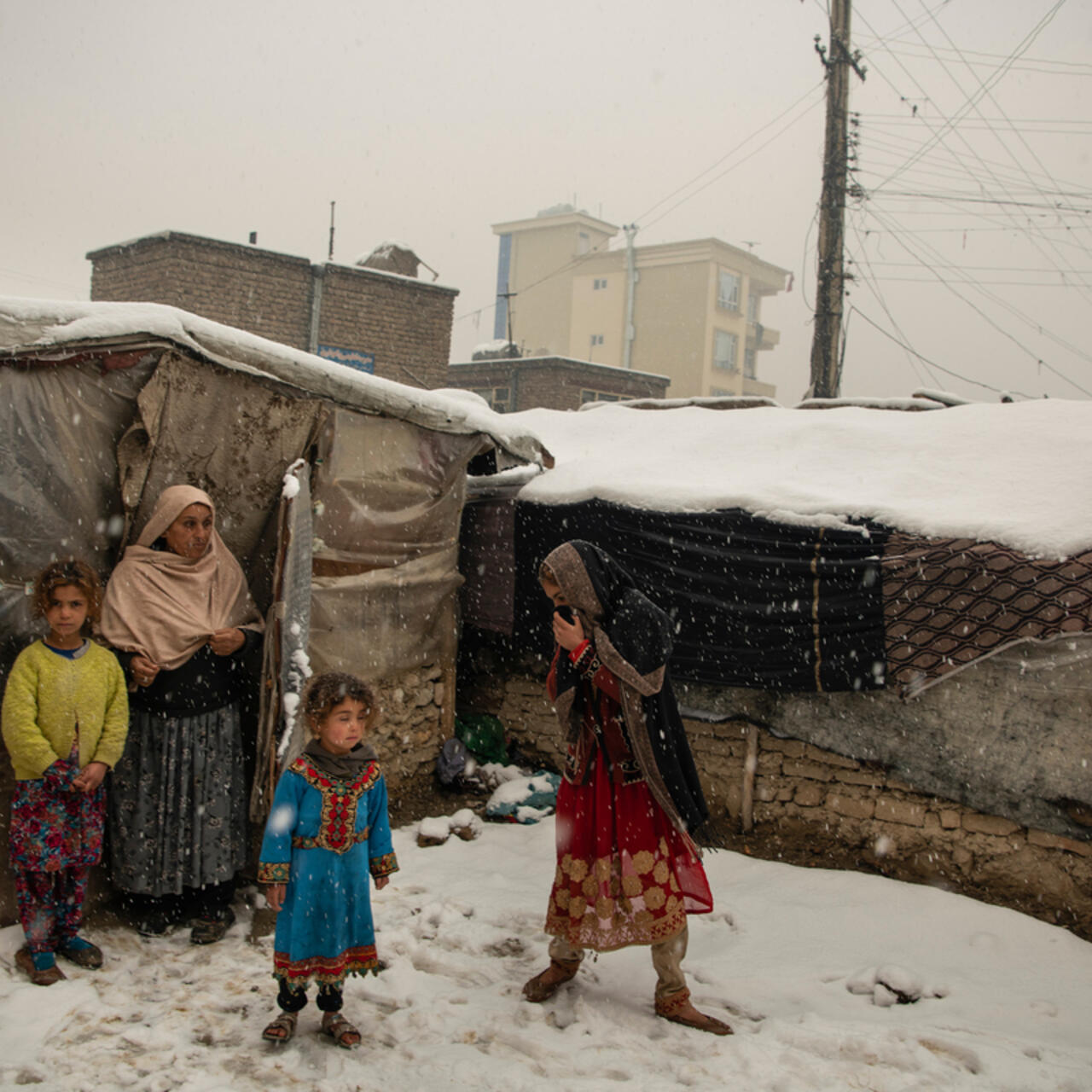
What is happening to NGOs and women in Afghanistan?
As Afghanistan faces a growing humanitarian crisis, Afghan women and girls are bearing the brunt of much of the suffering.

As Afghanistan faces a growing humanitarian crisis, Afghan women and girls are bearing the brunt of much of the suffering.
It’s been over a year since the Taliban (Islamic Emirate of Afghanistan) took power in Afghanistan. The Taliban takeover prompted international sanctions, which, combined with drought and a hunger crisis, has pushed 97% of the population into poverty.
Afghan women and girls are bearing the brunt of much of the suffering. The country is ranked the worst globally for women’s inclusion, justice and security. Contributing to the crisis are chilling announcements from the Taliban banning women from attending university and working for NGOs like the International Rescue Committee (IRC). The latter decision forced the IRC and other NGOs to suspend services because we cannot deliver services without female staff.
More than 3,000 out of the 8,000 people we employ in Afghanistan are women and many of the recipients of our work in the country are women and girls. For us, our ability to deliver services relies on women staff at all levels of our organisation. The exclusion of women from humanitarian service delivery will have catastrophic consequences for the Afghan people because our services depend on women workers. We’re working hard to find solutions to continue our work.
While we hope this suspension of services will be a temporary measure, the situation remains very uncertain. In the immediate term, we are focusing on reassuring and supporting our female staff and communicating to our clients.

“Increasing hunger, natural disasters, unemployment, a banking and liquidity crisis, rights-violating restrictions on women and girls, and the lack of functioning economy mean Afghans are facing a multitude of simultaneous crises."
- Zuhra Wardak, IRC deputy director for ethics, compliance and gender in Afghanistan.
97% of Afghanistan’s population is at risk of poverty, with over half of Afghans reliant on humanitarian aid. Already, 91% of the average Afghan household’s money is spent on food, forcing many families to resort to rationing and other coping strategies.
With 75% of public spending in Afghanistan subsidised by international aid, major gaps in state finances remain. And with the IEA unwilling to make concessions on the conditions set for the release of its foreign reserves from the Afghan Fund, Afghanistan’s central bank remains unable to play its role in distributing money.
Afghanistan enters the winter in 2022 with 18.9 million people experiencing food insecurity. This is double the number from the summer of 2021, and means people are unable to access or afford the food needed to live a healthy life. People are forced to make impossible choices to put food on the table, and children are at particularly increased risk of starvation, malnutrition and hunger, and preventable diseases.

Afghanistan is facing its third year of drought. On top of this, it has seen violent flooding across the country driven by above average rainfall, melting Himalayan glaciers, and poor management of water infrastructure. The La Niña effect is predicted to lead to a third failed wet season next year, which would hamper food production and continue to drive people to displacement.
Globally, Afghanistan ranks last for women’s inclusion, justice and security according to Georgetown’s Women, Peace, and Security Index. The Taliban have banned women from studying in universities, serving as political appointees and working for NGOs like the IRC. Alongside dress and travel restrictions, these bans intensely marginalise women in Afghanistan and contribute to an erasure of women from public life.
The bans will also have catastrophic impacts on the country’s ability to rebuild. Of the 8,000 people the IRC employs in Afghanistan, over 3,000 are women. We cannot reach people in need without female staff. As a result, for the first time since 1988, we have suspended our work in Afghanistan.
In 2022, the government cut spending on social services in the country by 81%. Combined with the halt in most international funding, this has severely weakened the delivery of essential public services. While a World Bank-managed program called the Afghanistan Reconstruction Trust Fund (ARTF) has allowed some services to resume, levels of development support to Afghanistan are set to continue to decline. This means services are unlikely to keep pace with rising needs.

Editor’s note: The IRC’s ability to deliver services relies on female staff at all levels of our organisation. If we are not allowed to employ women, we are not able to deliver to those in need. Therefore, the IRC is currently suspending our services in Afghanistan.
The IRC has worked in Afghanistan since 1988, providing healthcare, education and emergency response services. In 2022, we scaled up our staff from 1,700 to 7,000 today. 95% of our staff are Afghan and 41% are women. We operate in 12 provinces, supporting 68 health facilities and running 30 mobile health teams across the country. We also provide community-based education programmes, family support centres, as well as job skills training and help finding employment. In the next year, we expect to reach 800,000 direct clients and 4 million indirect clients.
Learn more about the IRC’s Afghanistan response.
Donate now to support the IRC's life-changing work in Afghanistan and worldwide. We are on the frontlines providing critical aid to crisis-affected people in more than 40 countries, including places on the 2023 Emergency Watchlist.
Read more about the top 10 crises the world can’t ignore in 2023 and download the full 2023 Emergency Watchlist report for profiles of all 20 crisis countries on the IRC's list.
*Some names have been omitted for privacy and safety reasons.